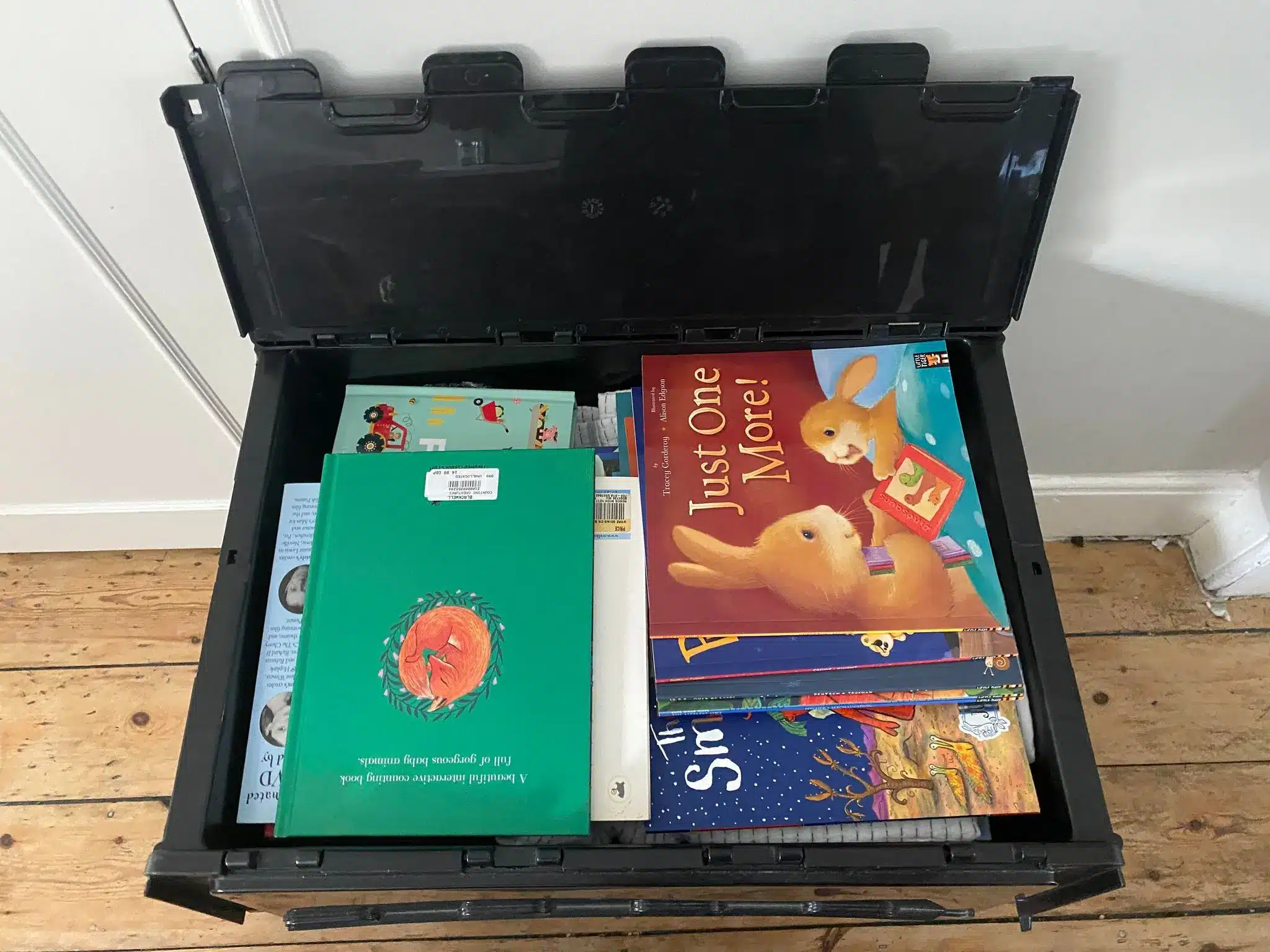Racking up a fantastic book collection is one of the many pleasures of being an avid reader. But that’s until it’s time to move! Packing books for moving can be tricky as they are notoriously heavy for their size and easily damaged if not packed appropriately.
However, you can streamline this process with the right supplies and strategy and hugely cut moving expenses. Continue reading for the best tips on efficiently packing books for moving.
Trim Your Book Collection for Moving and Storing
To begin with, do you need all these books? Some book enthusiasts hate parting with their books. However, decluttering can make moving and storing them easy.
Sort your books and decide which stories you want to leave behind. Start early to ensure your collection is timely. If you’re uncertain, leave it. Only carry the books you need. For the other unwanted or unused books, donate or resell them.
How to Donate
You can donate used or unwanted books to many places, including nonprofit organizations, charities, and local schools and libraries.
How to Sell
If you don’t feel like giving out your books without getting some reimbursement, you should consider reselling them. Inquire about a purchase from your local bookstore or post your books “for sale” on platforms like Craigslist, Amazon, eBay, and more.
Preparing the Cartons and Tools for Packing Books
Before packing books for a move, you must get your supplies. You’ll need book boxes, bubble or protective, acid-free wrap, packing tape and markers, scissors, and other accessories.
Small Boxes or Storage Totes
People need to make sure to select a big storage box. Unfortunately, book boxes tend to be extremely heavy. So, choosing smaller boxes that fit around 20 books is best.

If you opt for a larger box for your books, pack it until ½ or ¾ full, and then fill up the rest with soft and light items at the top, such as pillows or bedding. Avoid readily breakable boxes, as they tear easily. We advise using professional moving boxes, such as storage totes.
Rolling Suitcases
Rolling suitcases are fantastic carriers for packing heavy books as they have lots of space and come with wheels that make transportation easy.

Remember that these rolling wheels can still pose a risk in transit, so you should box the suitcase with other heavy items. If you decide to use rolling suitcases, follow the organizing tips below.
Bubble or Protective Acid-Free Wrap
Cover your books with bubble and protective, acid-free wrap before arranging them. Bubble wrap offers extra cushioning to protect your books from tears and scratches during transit. Likewise, acid-free wrap prevents acid migration, which can cause discoloration and deterioration of your books’ ink and paper.
Packing Tape & Markers
You might have selected the correct box, but anything can happen; it’s better to be safe than sorry! You’ll need packing tape to seal the moving boxes securely to avoid accidental openings or damage. While brown packing tape offers the best protection, masking tape is easy to remove and less likely to cause damage.
Markers are suitable for labeling the boxes. Label your boxes with words like “Handle With Care” and “Fragile,” or even pack your books according to the different genres to identify the contents when unpacking.
Storing Valuable Hardcover Books
You can place books flat or upright based on the book you’re packing in a box. The best way to pack hardcover books is by placing them upright in the box, spine against the box’s side. This is the same way you stack books on your shelf.
If these hardcover books are of the same size and shape and not so valuable, you can pack them flat and stacked.
The books should fit snugly but not so tightly that they can get damaged when you remove them. If you have precious hardcover books, wrap each in packing paper before putting it in the box.
Storing Heirlooms and Antiques
As you may anticipate, heirlooms and antiques warrant a different storage process than regular books. If damaged, these pieces lose their value instantly, regardless of whether they are repaired or how much older they get.
You should wrap every book individually with acid-free packing paper or cloth and bubble wrap and place them in a secure box with a layer of cardboard that separates the books from one another. If your heirloom is priceless, pack it in a tiny box or with only a few other items, and carry it with you rather than placing it onto the moving truck.
Miscellaneous Accessories
Other accessories you might need to pack books for moving include bookends, gloves, book covers, string or rubber bands, and book covers.
Pack Books the Right Way
The best way to pack books for travel is to keep hardcovers upright, with their spines against the side of the box and paperbacks flat on their backs. This arrangement helps to distribute the weight of your books effectively and keeps the books’ pages from getting torn.
Consider wrapping every book with bubble wrap or acid-free packing paper to protect against moisture and scratches. Don’t use newspapers or other materials that can transfer ink or leave a residue. If you’re concerned about mildew and bookworms, wrap the boxes well with packing tape and keep them in dry, clean areas.
Pack Heavy Books for Moving or Shipping
A single book isn’t as heavy, but they become cumbersome when you begin packing them together. Begin by sorting out which books you need, and declutter the rest by reselling or donating.
When packing these books, distribute them across several boxes instead of stacking them in one box to make them easy to handle and reduce the likelihood of damage.
Alternatively, you can keep the heavy books in a rolling suitcase. You should also wrap the books in acid-free packing paper or bubble wrap to protect them from damage, especially if you have precious pieces.
Pack Books for Moving With Professional Help
Packing books for moving is more challenging than it seems, especially if you have heirlooms or antiques. Hiring a professional moving company eliminates all the guesswork from the process, as they take care of everything from packing to relocation.
Unlike requesting assistance from your neighbor or friend, a professional offers several advantages, including experience, reliability, time-savings, and equipment and resources. Most movers offer insurance coverage that covers any unexpected damage.
Commonly Overlooked Tips for Packing and Moving Books
Some people still need to pay attention to critical tips on packing and moving books. Here are some of the things you should take note of when packing your books for transit.
The Right Box
Choose small moving boxes that are easy to carry and sturdy enough to resist damage from outside elements like water.
The Best Labeling Methods
Use clear and descriptive labels to identify the contents of every box.
Tips on Packing Magazines
Packing magazines are not preferred because they don’t offer as much cushioning, and their ink can sometimes stain other book covers or pages. Instead, using bubble wrap, acid-free, or packing paper is best.
Packing Books and Filling Gaps
Pack the books tightly in the boxes to avoid shifting and damage during transport. Fill any gaps with bubble wrap, tissue, or balled-up packing paper.
Lifting Heavy Objects
Lifting heavy books requires proper technique. Otherwise, you risk injury. Create a broad base of support, and leverage your legs. When lifting boxes from the ground, bend your knees and maintain the correct posture.
Ensure you have a solid grip on the box to avoid slipping or dropping accidents. If these boxes are too heavy to lift alone, you can request help from a friend or family member. Take constant breaks whenever you want to catch a breath, as continuous strain can result in muscle fatigue and potential injury.
Long-Terms Storage Solutions
If you’re looking for a long-term storage solution for your book library, you should begin by organizing your books in an easily accessible manner. You can organize them by genre, author, or category, and consider using sturdy boxes and bookshelves to keep them protected and organized.
It’s essential to check on the storage conditions for extra protection. Books shouldn’t directly contact the floor to avoid moisture absorption and damage. Ideally, keep your books in a well-ventilated, dry, clean environment, and wrap the most valuable pieces with acid-free paper. The book supports, or bookends are also crucial for keeping your books upright on the shelves and preventing slumping.
FAQs
Here are some frequently asked questions on how to pack heavy books for moving.
How do you package heavy books?
Place heavy books at the bottom, medium-weight books in the middle, and light books at the top. This protects your more delicate books from damage.
How do you pack books without being too heavy?
Avoid packing many books in a single, huge box. Instead, pack books in small boxes; if you use a large box, don’t fill it completely.
How do you pack a heavy book in a suitcase?
Place the heavy book at the bottom of the suitcase and cushion it with delicate items like blankets or clothing for extra protection.
How do you pack books for transportation?
Don’t pack too loose. Utilize bubble wrap or cushioning materials to keep the books from shifting inside the boxes. Also, don’t pack too heavy.
Summary of How to Pack Books for Moving
Relocating is exhausting, but adopting these tips on how to pack books for moving will considerably take away your stress. Your books will arriv

